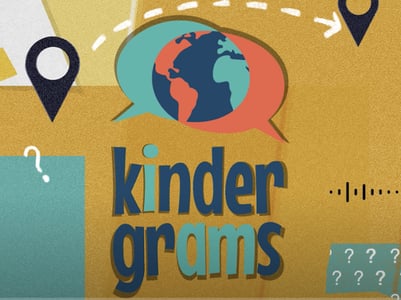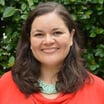
The Learning Sciences Exchange (LSX) is a two-year fellowship program that brings together experts from five sectors (journalism, entertainment, education policy, social entrepreneurship, and the science of learning) across multiple countries. In addition to learning about each other’s fields and sharing insights about their work, LSX fellows are matched up to form three groups, with members of each group working collaboratively to design research-based and innovative projects that advance children’s learning. This is one of those projects. For more, see www.learningsciencesexchange.org
My LSX fellowship journey began right before the Covid-19 pandemic. As the world around us shifted and changed, so did our focus: how could we advance children’s learning at a time when they were socially isolated from their peers?
A 2021 article in Frontiers in Education summarized the challenges today’s children face. “Since the spring of 2020, temporary school closures in over 180 countries have kept 1.6 billion students out of school (Azevedo, 2020; World Bank, 2020). The stressors associated with the pandemic and lack of access to schools (e.g., loss of routines, social isolation, economic hardships, lack of technology, no school meals) have increased the need for effective social and emotional learning (SEL) programs that can be delivered remotely.”
As my fellowship team and I discussed the aims and objectives of our project, we came across the Organization for Economic Cooperation and Development (OECD)’s programme for international student assessment (PISA). PISA measures global competence, or “students’ capacity to examine local, global and intercultural issues, to engage in open, appropriate and effective interactions with people from different cultures, and to act for collective well-being and sustainable development.”
The World Economic Forum recently posted a video that highlights 5 skills kids will need to succeed in the future. A survey of the world’s largest employers determined that kids will most need creativity, digital skills, collaboration, environmental stewardship, and global citizenship, or the ability to respect all cultures and embrace diversity, equity, and inclusion.
We needed to create a tool that was virtual, easily accessible to children and their caregivers, and globally relevant. We also wanted to focus on global competencies, improve social-emotional learning, and increase media literacy. After months of brainstorming and design thinking, Kindergrams was created.
Kindergrams is an Instagram and Youtube collection of short audio clips created by parents and children around the world. In these clips, children ages 7 - 12 answer questions in their native languages about their identity, culture, friendship, and global citizenship. These questions are meant to spark curiosity and start conversations, both in the home and the classroom. The discussions are also meant to build the global competencies of the listener and a sense of connectedness with other children. We envision that the audio clips can be utilized by parents and caregivers as well as classroom teachers.
For Parents and Caregivers
Recording a Kindergram is an opportunity for adults and children to connect and create a piece of media together. These clips can live on the parent or child’s own social media channels, with the hashtag #Kindergrams. To access our list of prompts embedded in another project partnership, click here.
For Teachers
Recently I had a virtual call with two of my favorite educators to discuss how Kindergrams could be used in a classroom setting. Kenny and Shannon Francis are a couple who both taught in early childhood classrooms in New Orleans before moving abroad to teach in Thailand and Morocco.
Shannon said, “After listening to the audio clips on the Kindergrams page, I think quite a few could be great discussion starters during my daily morning meetings. For my kindergarteners, I would focus on listening closely to the audio and having students summarize what the questions were, as we are learning how to ask questions. I would then ask the children to take turns answering the questions themselves. One of my favorite videos asks “Who is your best friend and why?” I would love to create a combined language and social-emotional activity where my students draw a picture of their best friend and then we brainstorm adjectives to describe them together.”
Kenny added, “I really like the fact that many nationalities are represented. In international schools, children get more exposure to other cultures and traditions, but many classrooms around the world are homogenous. This tool could be utilized in several ways, but it definitely falls under the International Baccalaureate (IB) Primary Years Programme first inquiry unit: who we are. If parents and children record their own audio clips like these, teachers could easily make them into a class project resembling Kindergrams.”
Our fellowship group has created a Kindergrams Classroom Guide for interested teachers and schools. The guide provides links to standards and suggested opportunities to use Kindergrams in the classroom.
Hear more about our story in this video and connect with us on Instagram at @kinder_grams to inspire questions and conversations with your child that build global understanding.
 Emmy O'Dwyer has worked with children from birth to adulthood for over 20 years as a teacher, school administrator, and nonprofit founding director. She is the Founder and Principal of Advancing Communities for Equity. She is a Teachstone Guest Blogger.
Emmy O'Dwyer has worked with children from birth to adulthood for over 20 years as a teacher, school administrator, and nonprofit founding director. She is the Founder and Principal of Advancing Communities for Equity. She is a Teachstone Guest Blogger.
Interested in writing for the Teachstone Blog? You can apply here!
